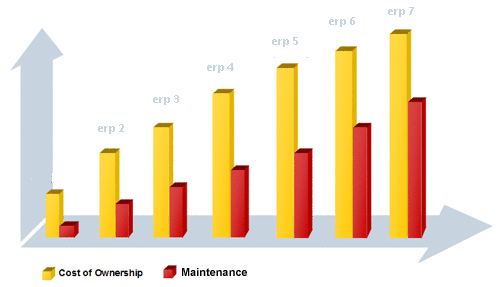Every company in today’s world will have some automation or other. Accounting packages are the first to be implemented. And the sales order processing is automated so that their clients and suppliers can access the data. It helps to implement Enterprise Resource Planning (ERP), which allows the entire company to automate all its division/locations. In 1980s, ERP was available only to large industries who could afford the huge expenditure. Many ERP vendors have done their own ERP Review and have developed ERP solutions to different markets. Any thinking of implementing ERP system shall have three stages of ERP Review process – Pre-implementation, Implementation and Post-implementation review. In the pre-implementation ERP Review, the company shall identify itself as large, medium or Continue reading
Abey Francis
ERP Process
Enterprise Resource Planning software offers you many modules which are tightly integrated with each other. The modules handle all functions related to engineering, Sales, planning, materials, manufacturing, finance, HR etc. Multiple locations can be seamlessly integrated into a single ERP System. Process is nothing but a systematic flow of work done. Process management is defined as the collection of activities corresponding to the planning and observing the effectiveness of a certain business process. This is true to ERP process too. ERP implementation some times calls for cultural changes in the enterprise. Typically ERP process has the following stages. Strategic planning, Readiness assessment, Vendor assessment and selection, Plan for Implementation, Implementation and post Implementation Assessment. Strategic Plan is to define the Continue reading
ERP Planning
Enterprise Resource Planning (ERP) is an integrated information system to take care of all departments within an enterprise. An ERP system generally includes software for sales, manufacturing, materials management, accounts receivable and payable, general ledger, warehousing, transportation etc. Many ERP systems also offer human resource management module or HRIS. Lot of effort is required for ERP planning and implementation. First step of automating your enterprise is to set up a committee to look into the requirement and feasibility of various ERP systems, which may lead eventually to ERP planning. The first stage is ERP planning and organizing. Two types of questionnaires may be prepared. One questionnaire shall address the needs of the organization to collect the information “as-is” and the Continue reading
New Products and Brand Extensions
When a firm introduces a new product, it has three main choices as to how to brand it: It can develop a new brand, individually chosen for the new product. It can apply, in some way, one of its existing brands. It can use a combination of a new brand with an existing brand. A brand extension is when a firm uses an established brand name to introduce a new product. When a new brand is combined with an existing brand, the brand extension can also be called a sub-brand. An existing brand that gives birth to a brand extension is referred to as the parent brand. If the parent brand is already associated with multiple products through brand extensions, Continue reading
Brand Value Proposition
The bottom line is that unless the role of a brand is simply to support other brands by providing credibility, the brand identity needs to provide a value proposition to the customer. What is a brand value proposition? Brand value proposition is a statement of functional, emotional, and self-expressive benefits delivered by the brand that provide value to the customer. An effective brand value proposition should lead to a brand–customer relationship and drive purchase decisions. The central concepts of functional, emotional, and self-expressive benefits of brand value proposition are explained below. 1. Functional Benefits The most visible and common basis for a brand value proposition is a func tional benefit–that is, a benefit based on a product attribute that provides Continue reading
Brand Identity Traps
Brand Identity Traps represent approaches to creating an identity that are excessively limiting or tactical and that can lead to ineffective, and often dysfunctional, brand strategies. After these brand identity traps have been analyzed, a broader identity concept will be developed, its scope and structure discussed, and the value proposition and credibility that flow from it examined. The Brand Image Trap Knowledge of the brand image (how customers and others perceive the brand) provides useful and even necessary background information when developing a brand identity. In the brand image trap, however, the patience, resources, or expertise to go beyond the brand image is lacking, and the brand image becomes the brand identity rather than just one input to be considered. Continue reading




